Welcome to TST-Elite Sites. This is your first post. Edit or delete it, then start writing!
Author: forestwooddentistry
How Often Should I Brush My Teeth?

It is recommended that you brush your teeth at least twice a day, ideally after breakfast and before bedtime. Brushing your teeth helps to remove plaque and bacteria that can cause tooth decay and gum disease.
It’s also a good idea to brush your teeth after meals if possible, especially if you’ve consumed sugary or acidic foods or drinks. However, if you’re unable to brush after a meal, rinsing your mouth with water can help to remove some of the food particles and bacteria.
Remember to use a fluoride toothpaste and a soft-bristled brush, and to brush for at least two minutes each time. Additionally, don’t forget to floss at least once a day to remove plaque and food particles from between your teeth and under your gum line.

Cosmetic dentistry is a branch of dentistry that focuses on improving the appearance of teeth, gums, and bite. Smile designing is the process of improving the overall appearance of a person’s smile. Cosmetic dentistry can be very helpful in smile designing as it offers a range of procedures that can enhance the appearance of the teeth and gums, resulting in a beautiful and confident smile.
Here are some ways cosmetic dentistry can help with smile designing:
- Teeth whitening: Teeth whitening is a popular cosmetic dental procedure that can help brighten and enhance the natural color of teeth. Professional teeth whitening can remove stains and discoloration caused by aging, smoking, or consuming certain foods and drinks.
- Dental veneers: Dental veneers are thin shells that are custom-made to fit over the front surface of teeth. They can be used to fix various cosmetic issues, such as chipped, stained, or crooked teeth. Veneers can also be used to close gaps between teeth and improve the shape and size of teeth.
- Dental implants: Dental implants are a popular option for replacing missing teeth. They are surgically implanted into the jawbone, providing a permanent solution that looks and functions like natural teeth.
- Gum contouring: Gum contouring is a cosmetic dental procedure that can help reshape and contour the gumline to improve the overall appearance of the smile. It is often used to correct a gummy smile or uneven gumline.
- Orthodontic treatments: Orthodontic treatments such as braces or clear aligners can be used to straighten crooked or misaligned teeth. This can improve the overall appearance of the smile and also improve oral health by making it easier to clean and maintain teeth.
In conclusion, cosmetic dentistry can be very helpful in smile designing as it offers a range of procedures that can improve the appearance of teeth and gums, resulting in a beautiful and confident smile. A skilled cosmetic dentist can evaluate your smile and recommend the best procedures to help you achieve your desired results.
Cosmetic Dentistry – What is it?
Cosmetic dentistry is a branch of dentistry that focuses on improving the appearance of a person’s teeth, gums, and smile. While traditional dentistry primarily focuses on oral hygiene, prevention, and treatment of dental issues, cosmetic dentistry goes beyond these essential aspects to enhance the aesthetic aspects of a person’s smile.
Cosmetic dentistry procedures are elective and are not always necessary for oral health. However, they can greatly improve a person’s self-confidence and self-esteem by creating a more attractive and pleasing smile.
Some common cosmetic dentistry procedures include:
- Teeth Whitening: This procedure involves removing stains and discoloration from the teeth, making them appear whiter and brighter.
- Dental Veneers: Veneers are thin, custom-made shells that are bonded to the front surface of teeth to improve their appearance by altering their shape, size, color, or length.
- Dental Crowns: Crowns, also known as caps, are tooth-shaped restorations that cover damaged or misshapen teeth, restoring their appearance and function.
- Dental Implants: Implants are used to replace missing teeth with artificial tooth roots and prosthetic teeth that look and function like natural teeth.
- Dental Bonding: This involves applying a tooth-colored resin to repair chipped, cracked, or discolored teeth, improving their appearance.
- Orthodontics: While often considered a part of general dentistry, orthodontic treatments like braces or aligners are used to straighten teeth and correct misalignments, which can greatly impact the aesthetics of the smile.
- Gum Contouring: Also known as gum reshaping or tissue sculpting, this procedure helps to correct a “gummy” smile or uneven gum line, enhancing the overall appearance of the teeth.
- Smile Makeovers: A comprehensive treatment plan that combines multiple cosmetic dentistry procedures to transform a person’s smile entirely.
It is essential to note that while cosmetic dentistry aims to enhance the appearance of the smile, it is still crucial to maintain good oral hygiene and address any underlying dental health issues. Before undergoing any cosmetic dental procedure, it is advisable to consult with a qualified and experienced cosmetic dentist to determine the most suitable treatment plan for your specific needs and desires.
Cosmetic dentistry focuses on enhancing or repairing a person’s dental look by addressing factors such as gum size, shape, colour, alignment, and more. With the use of this process, teeth can be reshaped, their form can be changed, gaps can be filled, and damaged teeth may be restored. Cosmetic dentistry has a lot to offer, from making little adjustments to significantly enhancing the appearance.
What distinguishes cosmetic dentistry from normal dentistry?
Although they are both dental specialities, general dentistry and aesthetic dentistry each have a distinct purpose. A generic dentist can treat the teeth, is proficient in performing all Basic Dental procedures, for eg: Filling of Dental cavities, Teeth Cleaning and Polishing, Basic tooth extractions.
However, cosmetic dentistry is more skilful and offers procedures like tooth whitening that give teeth a more natural appearance. But in both general dentistry and aesthetic dentistry, the dentist must be skilled and knowledgeable of all basic and difficult treatments.
Cosmetic dentistry and normal dentistry (often referred to as general dentistry) share the common goal of maintaining and improving oral health. However, there are significant differences between the two in terms of their focus, objectives, and the types of treatments they offer:
- Focus and Objectives:
- Cosmetic Dentistry: This branch of dentistry primarily focuses on improving the appearance of a person’s teeth, gums, and smile. The main objective is to enhance the aesthetics of the patient’s teeth rather than solely addressing functional issues.
- Normal Dentistry (General Dentistry): General dentistry, on the other hand, concentrates on diagnosing, preventing, and treating various dental conditions that affect oral health, including gum disease, tooth decay, and oral infections. The main goal is to maintain the overall oral health and functionality of the teeth and gums.
- Types of Treatments:
- Cosmetic Dentistry: Cosmetic dental treatments are elective procedures that are usually not medically necessary but are performed to improve the appearance of the teeth and smile. Common cosmetic treatments include teeth whitening, dental veneers, dental bonding, tooth-colored fillings, dental implants (for both functional and aesthetic reasons), and smile makeovers.
- Normal Dentistry (General Dentistry): General dental treatments cover a wide range of procedures that aim to diagnose, prevent, and treat oral health issues. These treatments include dental cleanings, fillings, root canals, extractions, gum disease treatments, crowns, bridges, and other restorative procedures that are essential for maintaining oral health and functionality.
- Patient Motivation:
- Cosmetic Dentistry: Patients seeking cosmetic dentistry are often motivated by a desire to enhance their appearance, improve their self-confidence, and achieve a more attractive smile.
- Normal Dentistry (General Dentistry): Patients visiting a general dentist are typically seeking routine check-ups, addressing oral health problems, and receiving preventive care to maintain their dental health.
- Insurance Coverage:
- Cosmetic Dentistry: Many cosmetic dental treatments are considered elective and cosmetic in nature, so they may not be covered by dental insurance plans. Patients often have to pay out-of-pocket for these procedures.
- Normal Dentistry (General Dentistry): Most general dental treatments are essential for oral health, and they are typically covered by dental insurance to some extent, making them more accessible to patients.
In summary, cosmetic dentistry is focused on enhancing the aesthetics of a person’s smile, while normal dentistry (general dentistry) concentrates on maintaining and treating oral health issues to ensure the proper functioning of the teeth and gums. These two branches of dentistry often work together to provide patients with comprehensive dental care, addressing both functional and aesthetic concerns.
Reasons to Visit a Cosmetic Dentist
There are several causes for which you could visit a cosmetic dentist, such as:
- Dental decay
- Damage
- Uneven teeth
- Crooked teeth
- Discolouration
- Missing teeth
Speaking and eating may be made more difficult for those whose teeth are chipped, rotting, misaligned, or discoloured. Others may experience lower self-esteem due to dental problems.
How can dentistry cosmetic treatments aid in creating smiles?
- Brightness
Teeth that are stained or discoloured can be caused by several different things. Teeth can get stained or discoloured due to age, caffeine, diet, smoking, and other factors. Cosmetic smile design dentistry may improve smile design by removing stains or discolouration, giving teeth a brighter, whiter appearance. To make their smiles more vibrant, many people use teeth whitening procedures.
- Arrangement and alignment
There are several techniques in cosmetic dentistry that can help close gaps and realign teeth. Teeth gaps may be filled quickly and easily using dental bonding. Teeth are frequently shaped and given a more realistic appearance using resin that is tooth-coloured. Aligners can be used to shift teeth back into their ideal positions.
- Cosmetic dentistry for design
Your look and smile can be improved with the assistance of an experienced cosmetic dentist. Additionally, it might make you appear and feel younger. Cosmetic dental operations are frequently performed to replace lost, chipped, damaged, or discoloured teeth. These procedures also assist to realign the jaw and enhance the bite. Here’s a closer look at how these cosmetic treatments may aid in creating the perfect smile.
- Teeth that are missing, uneven, or damaged
For teeth that are uneven, missing, cracked, chipped, or chipped and broken, there are several solutions. When it comes to aesthetic fixes for these issues, a cosmetic dentist at Clove Dental could advise veneers, bridges, or implants.
Considerations in the Design of a Smile
It might be challenging to pinpoint exactly what you want to be changed when you are unhappy with your smile. These elements can be taken into account when you are prepared to develop your grin.
- The symmetry of the teeth and mouth must be harmonious and properly positioned concerning the eyes and the midline of the face.
- Your grin takes on a distinctive form due to the way your mouth, lips, and teeth are shaped. The margins of the upper teeth and the smile line can be aligned with the use of cosmetic dentistry operations.
- The form of each tooth and how it influences the smile are both factors in tooth characterisation. Teeth that are smaller, rounder and smoother are typically viewed as more feminine. Larger, squarer teeth are considered to be more manly.
- The most noticeable component of a grin is proportion. To achieve a balanced, healthy grin, the two front teeth must be of the proper length since they have the most visual influence.
- Occlusion can limit a tooth’s ability to function. When the mouth is closed, the top and lower teeth should make contact with one another. This is necessary for proper eating and jaw alignment, as well as the overall appearance of the grin.
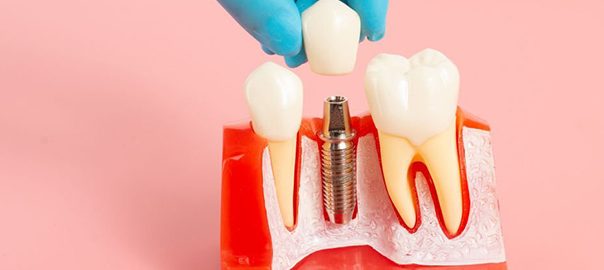
A missing tooth is one of the most prevalent dental problems in India. Despite improved dental care, regular oral hygiene regime, and many other preventive measures, many people face the problem of a missing tooth.
A grossly decayed tooth, long-term periodontal problems, gum diseases, or any traumatic injury can lead to tooth loss. It might not seem like a huge issue, but it can harm the patient in many ways. For example, when a tooth is missing for a long time and has not been replaced, it can affect adjacent teeth position and change the patient’s jaw bone anatomy.
Nowadays, there are several options available for the replacement of missing teeth. An ideal solution for replacing missing teeth are dental implants. Over the years, dental implants have evolved and shown tremendous results in many patients. The certified periodontist and other implant specialists are working diligently in this field to transform the patients’ smiles.
Let’s know more about dental implants and why a certified periodontist should be your only partner for the implant procedure.
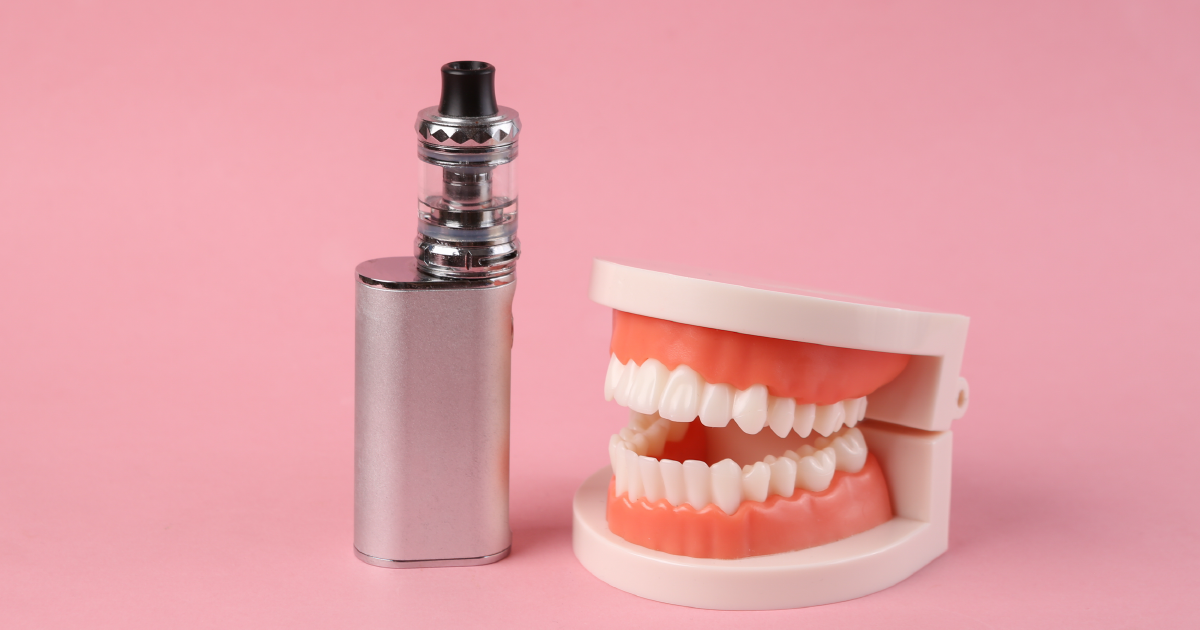
As with smoking cigarettes, vaping is an activity that can have a negative effect on your teeth and overall oral health. Vaping devices have become more popular in the past decade amongst teenagers and young adults. As a result on your oral health, you may experience tooth decay, cavities, and gum disease.
What Causes an Impacted Tooth?
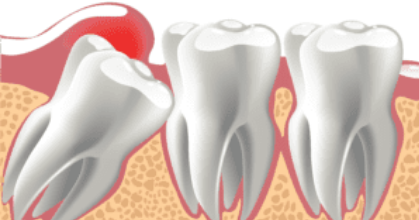
Have you ever been told you have an “impacted tooth” from your dentist or orthodontist and wonder what it means? In the dental world, impacted means a tooth has not come in as expected due to lack of space or it coming in the wrong direction.
Root Canals: No More Pain!
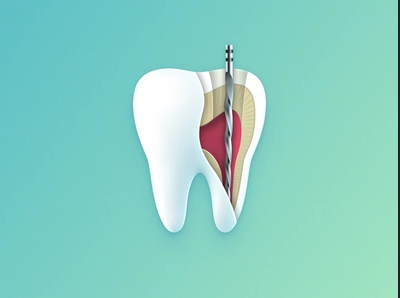
Root canals have historically gotten a bad rap, but they can be the saving grace for your extreme tooth pain, and the tooth itself! When many people think of root canal therapy, they fear the dentist or endodontist causing intense pain. However, that is not the case! In fact, root canals help to eliminate your tooth pain and are not a painful procedure.

As humans, we have two sets of teeth throughout our lives and the first set of teeth that grow in are commonly known as baby teeth. Do adults still have their baby teeth and if so, why does it happen? Read on to learn more answers to this question and more!
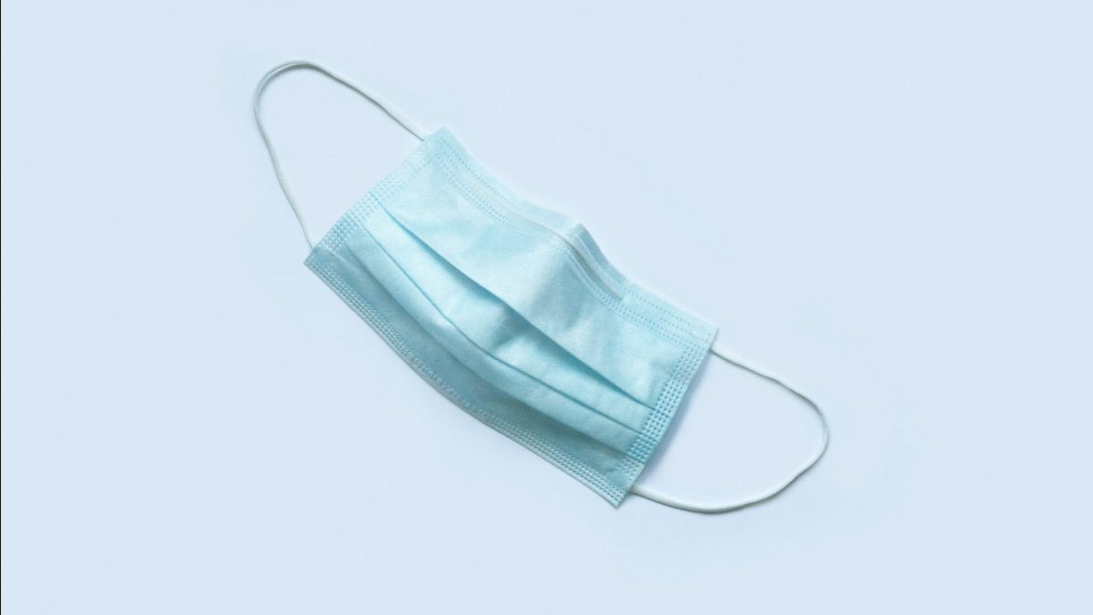
There is emerging evidence suggesting a potential connection between gum disease (periodontitis) and COVID-19 complications. While more research is needed to establish a definitive link, several studies have observed an association between periodontitis and an increased risk of developing severe COVID-19 symptoms. Here’s what we know so far:
- Inflammation and Immune Response: Gum disease is characterized by chronic inflammation and bacterial infection in the gums. This inflammatory response can lead to a dysregulated immune system. COVID-19 is also associated with an excessive immune response, leading to a cytokine storm, which can contribute to severe respiratory complications. It is possible that the preexisting inflammation from gum disease may exacerbate the immune response to COVID-19.
- Shared Risk Factors: Gum disease and COVID-19 share common risk factors, such as older age, diabetes, smoking, and other systemic diseases. These factors may contribute independently to both conditions, making it difficult to determine a direct causal relationship between gum disease and COVID-19 complications.
- Oral Cavity as a Reservoir: The oral cavity serves as a reservoir for various pathogens, including respiratory viruses like SARS-CoV-2, the virus responsible for COVID-19. It is hypothesized that periodontal pathogens may serve as a source of infection or contribute to the systemic spread of the virus, potentially increasing the risk of severe COVID-19 outcomes.
- Limited Clinical Studies: While some observational studies have shown a correlation between gum disease and COVID-19 severity, the evidence is still limited. More rigorous research, including well-controlled clinical trials and larger population studies, is required to establish a direct cause-and-effect relationship between the two.
Given the potential connection and the established importance of oral health for overall well-being, it is advisable to maintain good oral hygiene practices, including regular brushing, flossing, and dental check-ups. Individuals with preexisting gum disease should consider seeking appropriate treatment and managing their oral health to reduce the potential risk of complications, including those related to COVID-19. As always, consulting with healthcare professionals, including dentists and physicians, is recommended for personalized advice and guidance.
A new study published in the Journal of Clinical Periodontology came up with an interesting fact that there is a strong association between periodontitis and the complications of COVID-19. After examining more than 500 COVID-19 patients the researchers could deduce that those who had gum disease were at a greater risk of getting admitted into ICU, or put on a ventilator support and even more likely to die.

In Orthodontics, there have been many ongoing and inventive modifications to techniques, hardware, and treatment overall. Some have been very successful, such as Invisalign and self ligating brackets. However, there are others that should be researched thoroughly before deeming them as a good option for orthodontics treatment. At Fry Orthodontics, our average treatment time is just 16 months! We do our best to get patients out of treatment as quickly possible, but also know the dangers of moving teeth too quickly. Let’s discuss some common misconceptions and possible dangers of fast braces.
